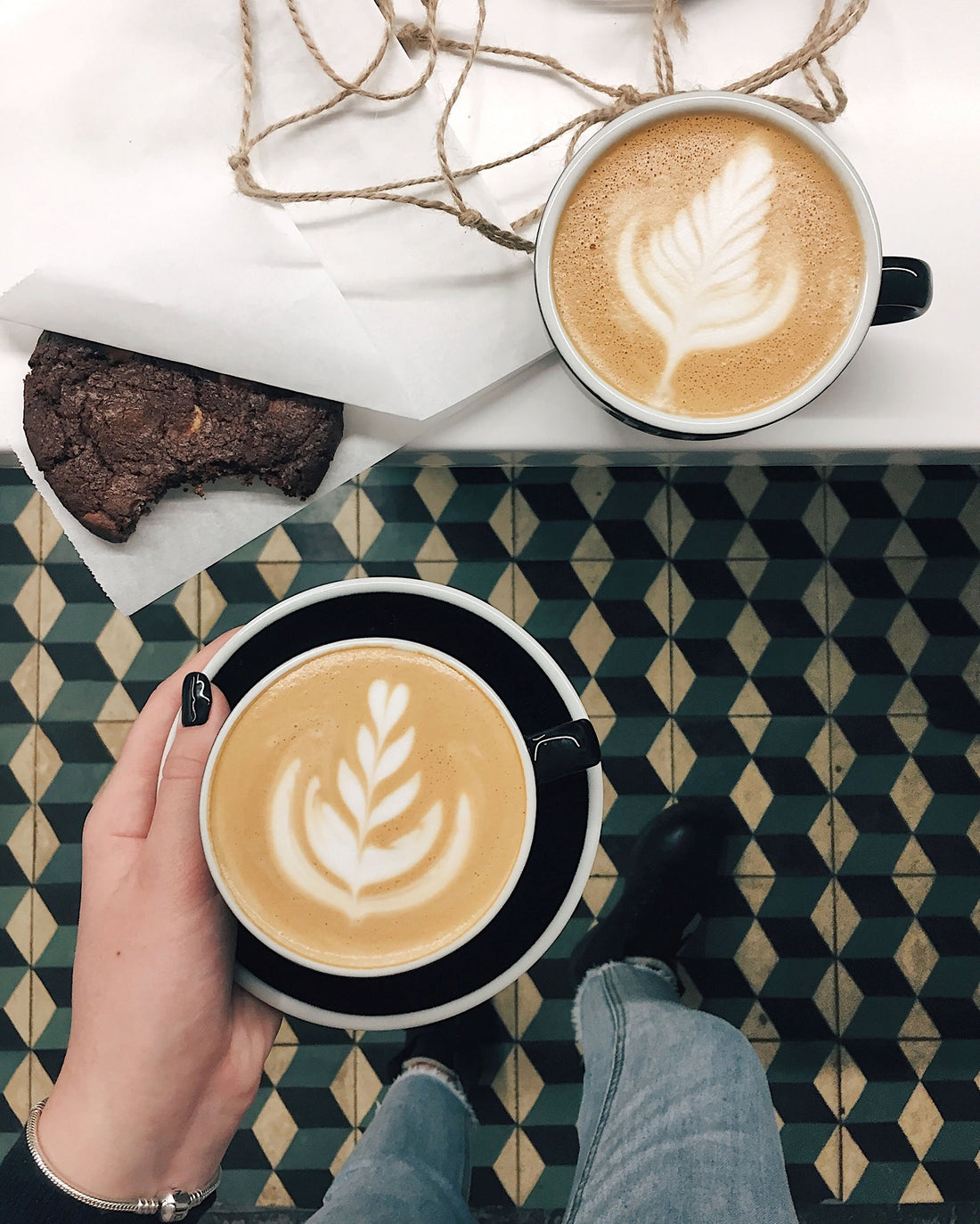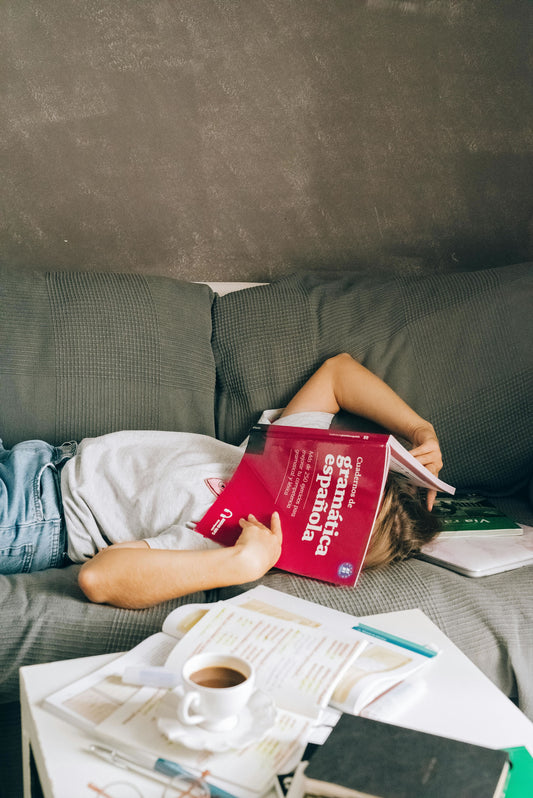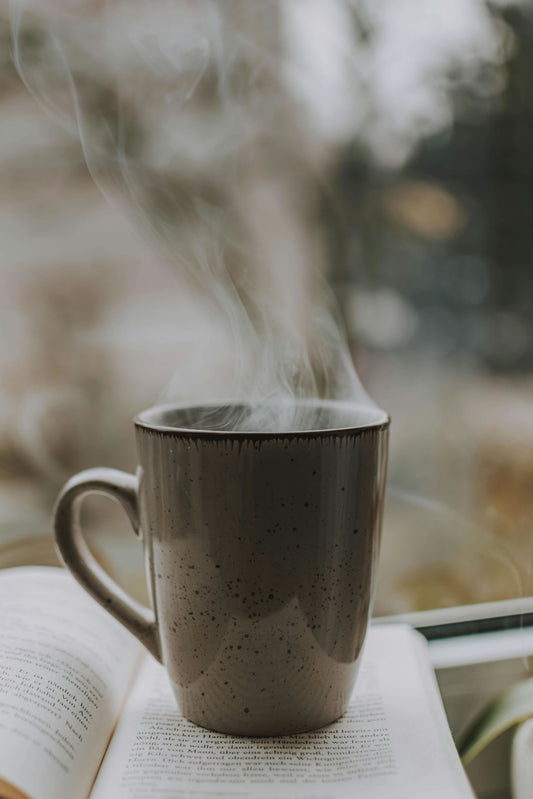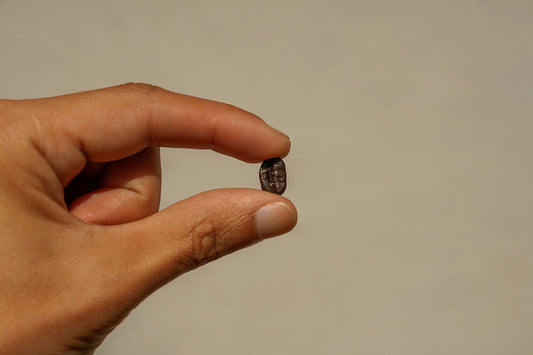If you're not a seasoned barista, understanding the lingo of coffee can often feel as confusing as deciphering a foreign language. Terms like 'cappuccino,' 'latte,' 'macchiato,' or 'mocha' seem to make up a whole new dialect in the world of coffee lovers. Of all these, the confusion between a latte and a cappuccino is most common. Are they really that different? Or is it just a marketing gimmick?
In this blog, we aim to break down the difference between latte and cappuccino. By the end, you'll be well versed in their distinct flavors, textures, and preparation methods, arming you with the knowledge to refine your coffee selections going forward.
Join us on a flavorful journey through the contrasting elements that define the Latte and Cappuccino as we reveal the secrets behind their frothy crema, steamed milk ratios, and the distinctive experiences they offer to coffee lovers in the market.
/ IN THIS ARTICLE
01. Introduction to Latte and Cappuccino
02. Historical Origins of Latte and Cappuccino
03. The Basic Composition of a Latte
04. The Basic Composition of a Cappuccino
05. Textural Differences: Milk Froth and Creaminess
06. Flavor Profiles: Understanding the Taste
07. Popular Variations of Latte in the Philippines
08. Popular Variations of Cappuccino in the Philippines
09. Brewing Techniques for Latte and Cappuccino
10. Nutritional Content Comparison
11. Choosing Between Latte and Cappuccino: A Guide
12. The Role of Milk in Latte and Cappuccino
13. Coffee Bean Types Best Suited for Each
14. Frequently Asked Questions
15. Conclusion
Introduction to Latte and Cappuccino
Espresso, steamed milk, and foamed milk are the three main components of each of these espresso beverages. The main distinctions, before we go into the specifics, are:
- A traditional cappuccino has an even distribution of espresso, steamed, and foamed milk. A latte has more milk and a light foam layer.
- A cappuccino is distinctly layered, while the espresso and steamed milk are mixed together in a latte.
What Exactly Is In A Cappuccino?
Beginning with a base layer of one or two espresso shots (usually two in the US), a cappuccino was refined and gained popularity during both World Wars. A second layer of steamed milk is poured on top, then a generous helping of fluffy foam to give the drink its smoothness.
With less milk and more foam, a cappuccino offers a significantly stronger espresso flavor than a latte. If a barista can make the ideal cappuccino, they're doing their job well. The ratio of liquid to foam in a well-prepared cappuccino is one-to-one, which may be calculated by looking at the weight of the drink.
What Exactly Is a Latte?
Every latte starts with the same foundation: one or two espresso shots. Then, a few ounces of steaming milk are added to the espresso to make a creamy, rich drink with a faint espresso flavor. One to two is the usual proportion of espresso to steaming milk. The final step is adding a foam layer on top of the latte.
Lattes have surged in popularity over the past 20 years, so there is a lot of variation in how they are made. The latte can be flavored in infinite ways; for a sweeter variation, try vanilla or hazelnut.
Historical Origins of Latte and Cappuccino
Cappuccino is a coffee beverage believed to have originated in Italy but was likely influenced by an Austrian drink. It is produced by combining espresso with steamed and frothed milk proportionately.
In contrast to the cappuccino's three equal and separate layers and dollops of foam, the latte's composition consists of one espresso and two poured steamed milk with a thin foam layer on top.
The first attestation of cappuccino comes from the coffeehouses of Vienna in the 18th century, where the Kapuziner emerged as a popular drink made of coffee and whipped cream, usually with sugar. Italian cappuccino, however, first appeared in the early 20th century, after the invention of the espresso machine.
The color of the Capuchin friars' robes—a rich brown hooded cowl—that, when removed, showed a white bald head—a feature that later must have suggested a similarity to the color of the two drinks—Italian and Austrian—is directly related to the shared name of the two beverages.
The capuchin monkey gets its name from the distinctive monk's tail that grows out of its back, which is visually similar to the capuchin monkey.
In the years following World War II, espresso machines were more accessible and less priced than their clunky and pricey predecessors. As a result of that change, cappuccinos became the preferred beverage for Italians to enjoy with their basic morning meal, which typically comprises a pastry or hard roll.
Traditional cappuccinos are served by 10:00 or 11:00 in the morning since Italians strongly dislike anything milky after breakfast. This is due to the belief that milk makes it harder to digest a good meal.
Indeed, by late morning, many Italian coffee shops had put away the metal pots used to steam milk, and visitors who wanted a cappuccino were told to get an espresso instead.
In Britain, where coffee and milk were always drunk together, cappuccino first gained popularity outside of Italy. In the 1980s, when national coffee chains began to sprout up, the drink took off, although it had been served in American Italian restaurants since the 1930s.
The Basic Composition of a Latte
Lattes are simple and delightful to make at home. What follows is a detailed guide on how to make a latte, including the necessary ingredients and equipment.
Latte Ingredients
Making a cafe latte at home or a coffee shop is quite straightforward. The following items are required to prepare a latte:
- Your preferred milk
- Coffee with a Medium Roast (Find out why espresso-based drinks are best made with medium roasts.)
No sugar or flavoring is needed to make a classic cafe latte since the combination of good espresso and milk makes it velvety, smooth, and well-balanced. But lattes are the ideal base for specialty drinks with a sweeter character and a variety of flavors. Fragrances like mocha, vanilla, and caramel are common additions to lattes.
Equipment
For the traditional latte, consisting of steaming milk and espresso, a steam wand attachment for your machine is a must-have. While there are several ways to brew a latte, this one is the quickest.
Steaming milk by hand or with a milk-steaming device and brewing espresso in an Aeropress, Moka pot, or French press coffee maker will allow you to make a latte even if you don't have an espresso machine.
Although the end product might not be exactly like your favorite coffee shop's, you can be sure it will be a rich and creamy latte.
The Basic Composition of a Cappuccino
Cup of coffee ratio. Again, this varies from place to place, but a cappuccino usually ranges from 140 to 180 milliliters.
The quantity of espresso used will determine the precise size.
To make a cappuccino, you'll need:
- 1/3 of an espresso
- a third of a cup of hot milk
- 1/3 of the milk foam
Textural Differences: Milk Froth and Creaminess
The frothy milk in a latte has a microfoam consistency and is typically silky smooth. A uniform and creamy coating of steamed milk on the espresso is achieved by its delicate texture. The end effect is a subtle creaminess that goes well with the coffee without being overbearing. Achieving a harmonic integration of coffee and milk flavors is the goal.
The milk foam in a cappuccino, on the other hand, is denser and thicker. The use of dry, stiff foam enhances the frothy texture of a cappuccino. Typical cappuccino foam consists of three layers: espresso shot at the base, steamed milk in the middle, and a thick coating of dry foam on top. A richer, frothier creaminess and a more robust and noticeable tactile sensation are the outcomes of this tiered method.
Cappuccino and lattes use frothy milk, but the two drinks couldn't be more different in texture and richness. The microfoam texture of a latte is smoother and more integrated, giving it a subtle creaminess. On the other hand, the foam in a cappuccino is thicker and drier, giving the coffee a stronger, frothier creaminess and a unique sensory feature.
Flavor Profiles: Understanding the Taste
There are more differences than similarities between cappuccinos and lattes. The only similarity is that they both use the same ingredients. These beverages couldn't be more different from one another in terms of amount, mode of preparation, and even flavor profile.
Quantities
The three key components of a cappuccino—espresso, milk, and foam—must be distributed evenly. On the other hand, a latte calls for a larger amount of steamed milk topped with a thin coating of foam.
Prep
Lattes and cappuccinos are made slightly differently. The most important thing to remember while making a cappuccino is that it is layered, so you pour each ingredient individually. In contrast, latte recipes call for a combination of espresso and steaming milk.
Flavor
Lattes and cappuccinos differ significantly in flavor. The three components of a cappuccino must be evenly layered for the drink to have its signature rich and robust coffee flavor. In contrast, the blended components in a latte make it creamier and give it a milder coffee flavor.
Popular Variations of Latte in the Philippines
Although many people prefer their coffee black, we occasionally crave the added creaminess that a splash of milk gives our cup. Coffee is essential to many people's daily lives.
The bottled variety is the most convenient because you can keep it in the fridge (most varieties last around three or four days) and have some on hand whenever you need a caffeine boost. Which version should you choose? They're not all the same.
There will be no cold-brew lattes here; we will only have espresso-based bottled lattes. Typical lattes have whole milk and no sugar added, so that's what we had. Although we prioritize quality, we also consider the bottles' accessibility and cheap pricing.
To us, the perfect latte has the flavor of high-quality coffee, the body of milk that complements it without masking it, and the sweetness that is just right—a rich, delicious sip.
In the market for a quality bottled latte? Based on our research in Manila, these are the top picks:
Tuesday Bake Latte
Prepared using medium-roast Arabica beans of only one origin and brewed to order. The narrow rectangular container strikes a nice balance between mild and robust, which is great. The velvety whole milk and coffee create an exquisite harmony that complements each other beautifully.
Decouverte Latte
Decouverte is a well-recognized seller of coffee equipment (including espresso machines,
They employ their Decouverte No.
13 blend—consisting of 100% Arabica beans from Mt. Apo, Yunnan, and Vietnam—in their Latte (P120), which comes in an easy-to-store bottle, and they also sell coffee percolators, coffee grinders, and other related products. With just the right amount of milk, you may enjoy a slightly toasty and lemony coffee character without being overpowering.
Pedal Cafe's Latte
Pedal Cafe's Latte (P120) employs 100% dark-roast Arabica beans, resulting in seductive sips. You can taste its vigour amidst the creamy milk, and it's medium-level intense with undertones of cocoa duskiness—nothing too harsh or overwhelming. On top of that, it has a rich, velvety texture that goes well with plain water and ice.
Cafe Whitney's Latte
With an appropriately roasty beginning, a touch of dark chocolate, and a berry-like finish, Cafe Whitney's Latte (P150) is the perfect amount of coffee. While the coffee is the star, the milk adds the right creaminess. The good news is that they also make oat and almond milk lattes for those who prefer non-dairy alternatives.
Arabica Iced Caffeine Latte (Bottled)
You can get % ARABICA's Iced Caffe Latte from their stores or have it delivered through their Beepit website in a PET bottle (P190)—specifically, a sturdy octagonal one with the % logo.
Naturally, Arabica beans are used here, and the coffee has a moderate roastiness, a hint of malt, and a mild chocolate aftertaste that lasts to the last sip. The milk used here seems to have been a high-quality brand because of its naturally sweet aftertaste and somewhat full-bodied nature.
Popular Variations of Cappuccino in the Philippines
Here in the Philippines, coffee has a rich history that matches its flavour. A Franciscan priest from Spain brought The first coffee tree to Lipa in 1740.
As word of coffee's arrival in Batangas spread to neighbouring towns like Lemery, San Jose, Tanauan, Taal, and Ibaan, the cultivation of the crop began. After much deliberation, Lipa was officially named the Philippines' coffee capital.
Coffee from Batangas first went to the United States in the 1860s, then to Europe's newly opened market.
The coffee industry in Cavite expanded after the success of the plantations and exports in Batangas. In 1876, the initial coffee seedlings were planted in Amadeo. As far back as 1880, the Philippines was the sole country in the world that could supply coffee beans. In 1889, the Philippine coffee industry reached its zenith. The insect invasion and coffee rust are to blame for this.
By then, Brazil had become the world's largest coffee producer. Although the coffee business continued, fewer acreage were allotted to it as farmers began to focus on other crops. The resumption of coffee cultivation by the farmers occurred in the 1960s. This is all because the Americans brought a more resilient type of coffee to the world.
At that point, many Filipino coffee bean suppliers sprang to prominence. In every way, they will only ever produce high-quality coffee items. Presently, 30,000 metric tons of coffee are produced annually in the Philippines.
Coffee is consumed for purposes other than obtaining a daily dosage of caffeine these days. To truly appreciate coffee, one must savor each sip. To truly appreciate your coffee, you must know its origin. In the Philippines, you can find the following four varieties of coffee:
Cordilleran Arabica Coffee
"Kapeng Tagalog" is the common name for this. Arabica beans thrive in high altitudes, especially in regions with consistent rainfall and shade. Therefore, the Cordillera region is ideal for growing these beans.
More than 70% of the world's coffee comes from this one kind, making it one of the most popular. Arabica has a distinct scent and a bittersweet flavour. The southern Tagalog regions of Batangas, Laguna, and Cavite are also rich with coffee plantations, although most are located in Benguet, Sagada, and Ifugao.
Batangas' Kapeng Barako
Liberica coffee, also known as Kapeng Barako, is a great choice if you want your coffee to be bold and flavorful. A Brazilian planted The first Barako tree in Lipa City, Batangas, in 1800 to give you an idea of its history.
Because of its relatively low output compared to other coffee kinds, Kapeng Barako is considered an uncommon species. Because of this, one must have a drink of Batangas's famous coffee while visiting the province.
Southern Tagalog Robusta Coffee
Among Filipino coffees, it is likely the most common. This variety of coffee is considerably simpler to grow than Arabica. Because of its ability to thrive in lowlands, it is abundant in the Southern Tagalog regions, particularly in Bulacan, Mindoro, and Cavite.
Because it is so commonly used to make the instant coffee that we all love, it makes up over 85% of the coffee farms in the Philippines. Robusta coffee, when brewed, has a stronger scent and a considerably bolder flavor. In addition to the regions mentioned, Sultan Kudarat is known for its excellent Robusta. Kape Dulangan is a well-known, popular brand.
Excelsa Coffee of Batangas and Quezon
More than seven per cent of the nation's coffee supply is this variety. Its alluring perfume and distinctive flavor are like jackfruit in sweetness, and they go hand in hand.
This coffee is unique because it can withstand dryness and other coffee diseases, which makes it easy to grow. Farms in Sorsogon, Bicol, and Quezon allow you to witness it firsthand.
Davao and Cavite Civet Coffee
This coffee is out of the ordinary. You should consider trying Civet coffee if you're after a more unusual flavor with an exotic origin. The Philippine civet cat is the mascot of this coffee variety. Their excrement was the actual source of the coffee.
The coffee berry is the staple diet of the tree-dwelling Philippine civet cat. A unique coffee flavor was produced by washing and cleaning the droppings. A rich, chocolatey scent is its defining feature.
Mt. Apo Civet Coffee is the most well-known brand in Davao. at Café Amadeo in Amadeo, Cavite. This coffee type, locally called Kapeng Alamid or Kapeng Musang, is also found throughout southern Luzon.
Brewing Techniques for Latte and Cappuccino
How To Make A Latte
Key ingredients
- Espresso
- Steamed Milk
- Foamed Milk
Equipment
- Coffee machine with steam wand/arm
- Milk jug
- Thermometer
Quick guide
- Make a shot of espresso (or two) and pour it into a latte glass.
- Half-fill your milk container; use whole milk if possible.
- Make sure to empty your steam arm before you try to steam milk.
- Before making your espresso, foam the milk, being careful to achieve a good, smooth microfoam.
- To remove any big air bubbles that may have escaped when foaming your milk, gently tap the jug or knock it on a table.
- From a comparatively elevated vantage point, start adding the frothed milk to your espresso.
- Keep pouring while lowering the milk and increasing the steepness of the pouring angle.
- After pouring, make sure a little bit of stiff milk foam is on top.
- Have a nice latte!
How to make Cappuccino
Of all the espresso-based beverages, cappuccino ranks among the most beloved. Espresso and steaming hot milk are mixed.
The Essentials
- Espresso machine
- Coffee beans
- Grinder
- Scale
- Cup
- Tamper
- Milk pitcher
- Cloth for portafilter and steam wand
Preparation in Steps
- The first step is to make the espresso.
- Fill the pitcher with milk.
- Thirdly, wet the fabric that will be used to hold the steam wand or steam. Get the steam wand into a completely upright position and purge it. Ensure the steam wand is parallel to the pitcher's nozzle before placing it. Centre the steam wand nozzle in the pitcher, placing it slightly below the milk surface. Adjust the whirlpool later by tilting the pitcher slightly.
- Fourth, activate the steam wand. Make foam in the initial few seconds (until the milk reaches 37 °C). The milk's volume grows as foam is generated, so keep the steam wand nozzle close to the milk surface. Hold the nozzle near the milk surface for a longer period to get more foam.
- At 37 degrees Celsius, slightly raise the pitcher to allow the nozzle to reach deeper into the milk. Avoid having the nozzle touch the pitcher's base. Get into the ideal position to make a swirl of milk. Bring the milk to a temperature of 55 to 62 degrees Celsius and keep heating it.
- Fifth, whisk the milk in a pitcher until it becomes glossy, silky, and smooth.
- Top off with the coffee and savor!
Nutritional Content Comparison
There is a nutritional difference between the two popular espresso-based beverages, lattes and cappuccinos. The classic ingredients for a latte are espresso, steaming milk, and a dash of foam. There are around 210 calories in a standard 16-ounce (473 ml) latte made with whole milk.
Contrarily, half espresso and half steamed milk and foam make up a cappuccino. Because more foam in a 16-ounce whole milk cappuccino increases volume without adding many calories, the calorie count is often around 150, a little lower than the recommended daily allowance.
Both beverages provide comparable nutritional profiles, featuring protein, calcium, and a modest dose of caffeine. But there will always be differences since people have different tastes and choose different ingredients, like milk.
Remember that these drinks' calorie and nutritional makeup can be drastically altered by adding flavored syrups or other toppings.
Choosing Between Latte and Cappuccino: A Guide
It all comes down to personal preference and the event you're attending when picking between a cappuccino and a latte. If you need assistance deciding, here is a guide:
Milk-to-Espresso Ratio
- Latte: If you prefer a creamier and milder coffee experience, go for a latte. It has more steamed milk and a higher milk-to-espresso ratio, resulting in a smoother and sweeter flavor.
- Cappuccino: For those who enjoy a stronger coffee flavor with a frothy texture, cappuccino is the way to go. It has equal parts espresso, steamed milk, and foam, providing a bolder and more intense taste.
Foam Preference
- Latte: The foam in a latte is minimal compared to a cappuccino, contributing to a more velvety texture. If you like a subtle foam layer, latte is the better choice.
- Cappuccino: Cappuccino is the winner if you appreciate a thick, creamy foam that adds textural contrast to the espresso. The foam in a cappuccino tends to be denser and more abundant.
Coffee Strength
- Latte: Latte is generally a milder option due to its higher milk content. A latte is a great choice if you prefer a coffee beverage that's not too strong.
- Cappuccino: With its balanced combination of espresso and milk, a cappuccino offers a stronger coffee flavor. Opt for a cappuccino if you enjoy a robust and intense coffee taste.
Occasion
- Latte: Lattes are ideal for relaxed moments, such as a casual brunch or an afternoon coffee break. A latte's mild and creamy nature makes it a versatile choice for various occasions.
- Cappuccino: Choose a cappuccino for a more sophisticated and energizing coffee experience. It's a great option for mornings or when you need a pick-me-up during a busy day.
Flavor Customization
- Latte: The milder flavor provides a canvas for adding flavored syrups or sweeteners. A latte is a versatile base if you enjoy customizing your coffee with various flavors.
- Cappuccino: The strong coffee taste of a cappuccino may overpower added flavors. A cappuccino might be the better choice if you prefer the natural coffee flavor without additional sweeteners.
Choosing a latte or cappuccino depends on your taste preferences and the moment's mood. Experiment with both to discover which suits your palate best, and don't hesitate to explore variations like flavored lattes or cappuccinos for a personalized touch.
The Role of Milk in Latte and Cappuccino
Milk is essential in cappuccinos and lattes since it improves the coffee's texture, flavor, and overall experience. But these two famous coffees use milk differently and to different ends.
Latte
- Role: In a latte, milk is a key component contributing to the drink's smooth and creamy texture. It serves to mellow the strong flavor of espresso, creating a more balanced and approachable taste.
- Impact: The milk in a latte provides a rich and velvety mouthfeel, making it a popular choice for those who enjoy a more indulgent coffee experience. The steamed milk adds sweetness and a touch of warmth to the beverage.
Cappuccino
- Role: In contrast, a cappuccino features equal parts of espresso, steamed milk, and foam. The milk in a cappuccino balances the espresso's intensity and adds a layer of frothy texture, creating a more complex and layered drink.
- Impact: The frothed milk in a cappuccino introduces a creamy yet airy consistency, enhancing the overall sensory experience. The foam adds a textural contrast to the boldness of the espresso, providing a delightful interplay of flavors.
Texture and Consistency
- Latte: A latte emphasizes a smooth and creamy texture, with a higher proportion of steamed milk than foam. This results in a more consistent and velvety mouthfeel throughout the entire drink.
- Cappuccino: The cappuccino's texture is characterized by the juxtaposition of the rich, velvety steamed milk and the light, airy foam. This dynamic interplay of textures creates a unique and satisfying drinking experience.
Flavor Enhancement
- Latte: Milk in a latte not only tempers the intensity of espresso but also imparts a subtle sweetness and creaminess. This makes lattes ideal for those who prefer a milder coffee flavor with a touch of sweetness.
- Cappuccino: The milk in a cappuccino enhances the espresso's flavor, while the foam introduces a slightly frothy and airy quality. This results in a more pronounced coffee taste, appealing to those who enjoy a stronger and more complex flavor profile.
While both lattes and cappuccinos rely on the transformative effects of milk, the ratio of steamed milk to foam and their respective impacts on flavor and texture distinguish these two beloved coffee beverages.
Whether one prefers a latte's smooth and comforting nature or a cappuccino's bold and textured experience, milk remains a fundamental element that elevates the coffee-drinking experience.
Coffee Bean Types Best Suited for Each
Choosing the appropriate coffee beans is essential for making a thick and flavorful latte or cappuccino to perfection. Medium to dark roast beans are perfect for lattes because of their velvety smoothness and creamy consistency.
Try a well-balanced blend like Colombian or Brazilian coffee to achieve a rich, complex flavor without drowning out the milk. Conversely, Cappuccinos are best made using beans that have a strong personality because of their robust and assertive flavor.
Espresso mixes made in Italy with beans from places like Sumatra or Ethiopia typically have the strength to taste coffee that stands out in a sea of frothy milk. If you want your latte or cappuccino to be perfect every time, it all comes down to finding the sweet spot where the coffee's natural flavors meet the other ingredients.
Frequently Asked Questions
What Coffee Beans Are Used In Cappuccino?
Cappuccino is made with equal parts espresso, steamed milk, and milk foam, and the type of coffee beans used will affect the drink's flavor. Using high-quality Arabica beans, the espresso will have a mild and smooth flavor that pairs well with the creamy and frothy milk.
What Kind Of Coffee Do You Use For A Latte?
Espresso - What Is In a Latte? A latte begins with the same base — a single or double shot of espresso. This espresso is then combined with several ounces of steamed milk to create a rich, creamy beverage that has a more subtle espresso taste. The typical ratio for espresso to steamed milk is about 1-to-2.
Is Arabica Or Robusta Better For Cappuccino?
Arabica coffee is typically used for specialty coffee drinks like espresso, cappuccino, and latte due to its mild and sweet taste. On the other hand, Robusta coffee is used for traditional coffee drinks like drip coffee and instant coffee due to its strong and bitter taste.
Which Coffee Has More Milk Latte Or Cappuccino?
Milk content: The main difference between a latte and a cappuccino is the milk-to-coffee ratio. Simply put, a cappuccino contains less milk than a latte. Both drinks start with a single or double shot of espresso, to which steamed milk is added.
What Are Latte Coffee Beans?
A medium-dark roast of 100% Arabica beans. Latte has been specifically blended to drink with milk. The word 'latte' is derived from the traditional Italian term 'Caffe Latte', which translates to 'Milk Coffee'.
Conclusion
While these coffee types may seem remarkably similar to the untrained eye, we now understand that each holds its unique identity. Be it the delicate balance of the coffee-milk-foam trifecta in a cappuccino or the comforting, creamy indulgence of a latte, your palate is the final judge on the preference.
Whether you're ordering at your favorite cafe or brewing a cup at home, you can now do so with an enriched understanding. Remember, beyond the type of coffee, the beans' quality, roast, and the barista's skill all play an equally significant role in making your coffee an enjoyable experience. So go ahead, relish your coffee—be it a cappuccino or a latte—and celebrate the fantastic diversity of the coffee world. Ultimately, both beverages contribute to the coffee culture, offering diverse options for coffee enthusiasts to savor and share.




